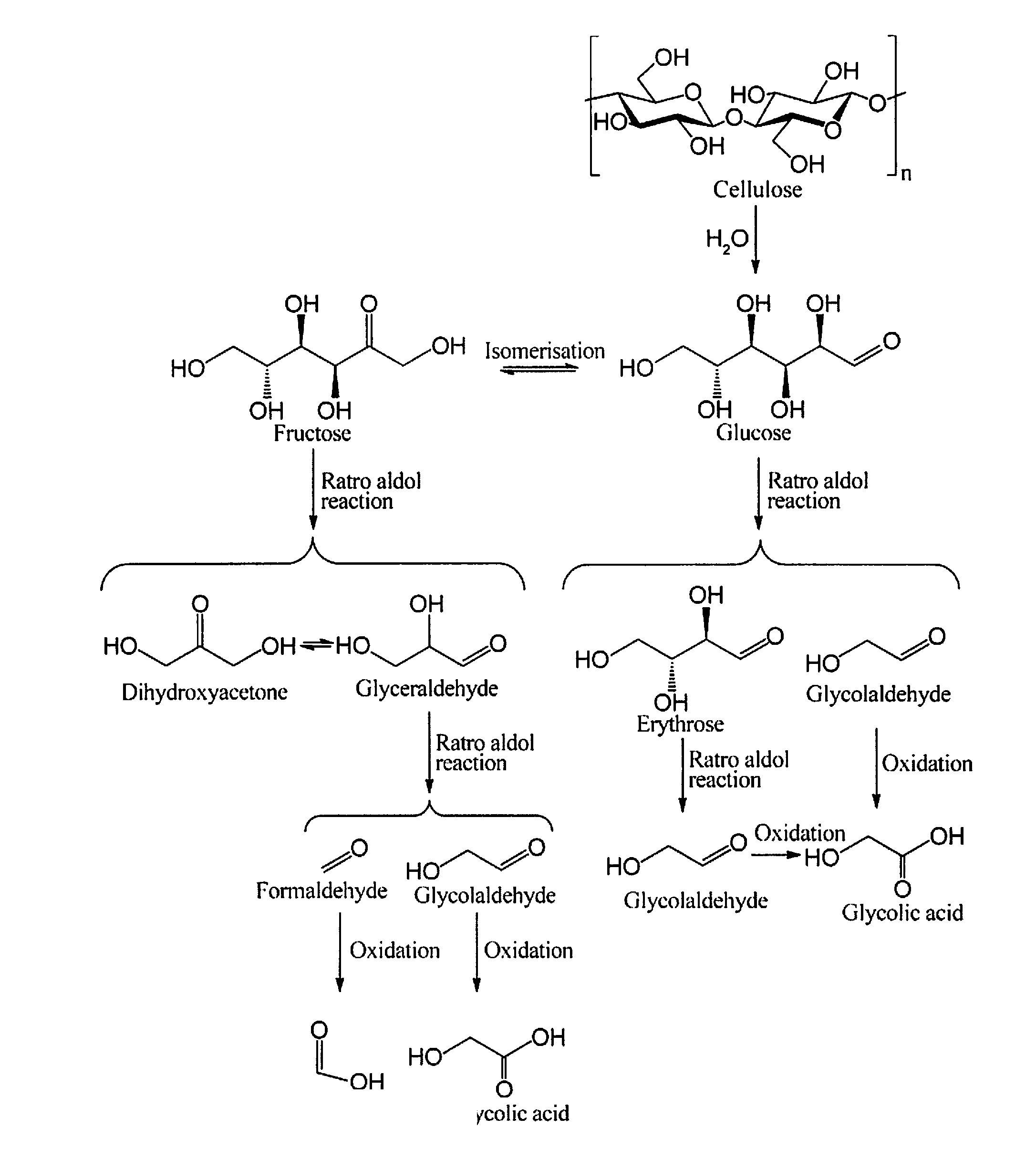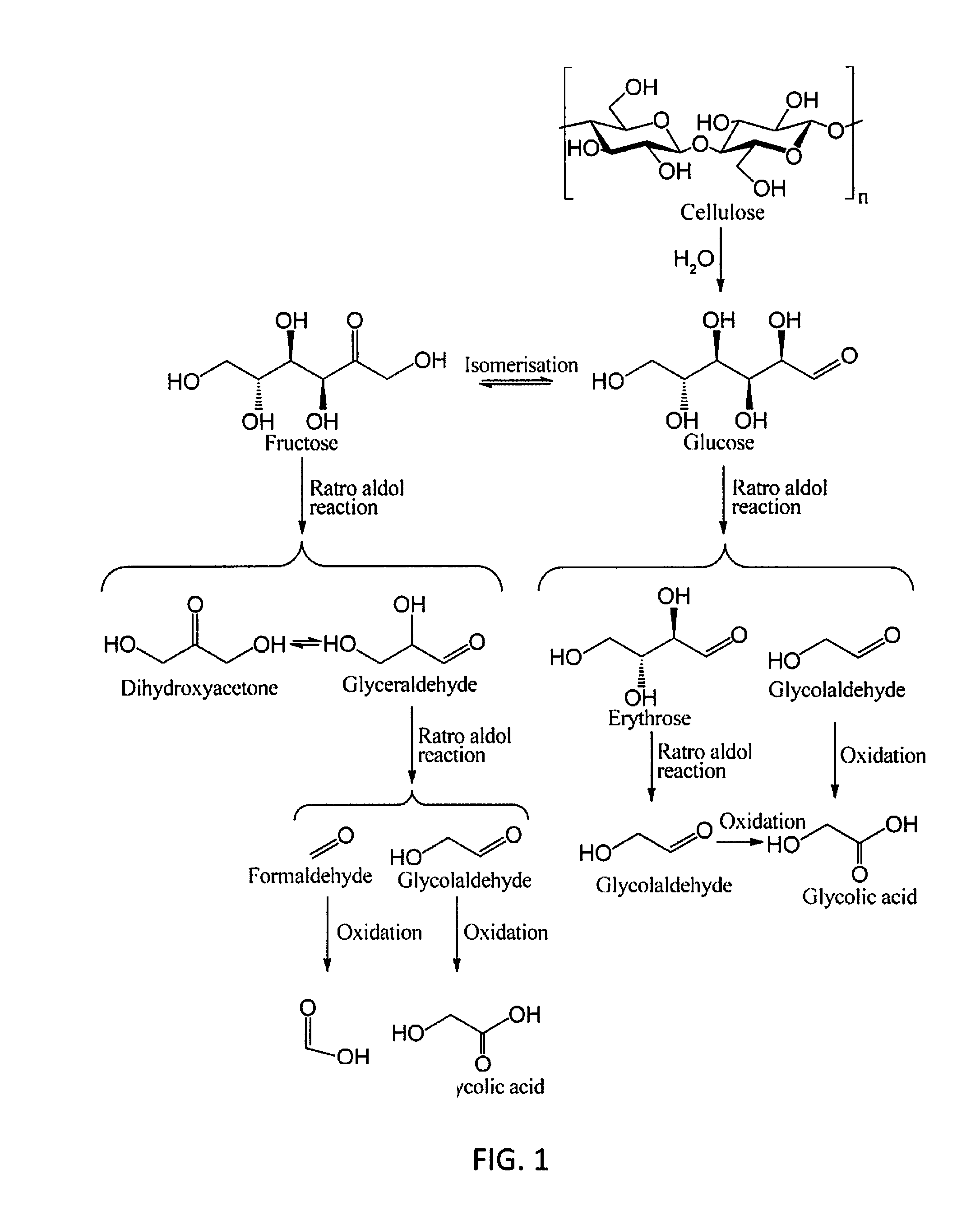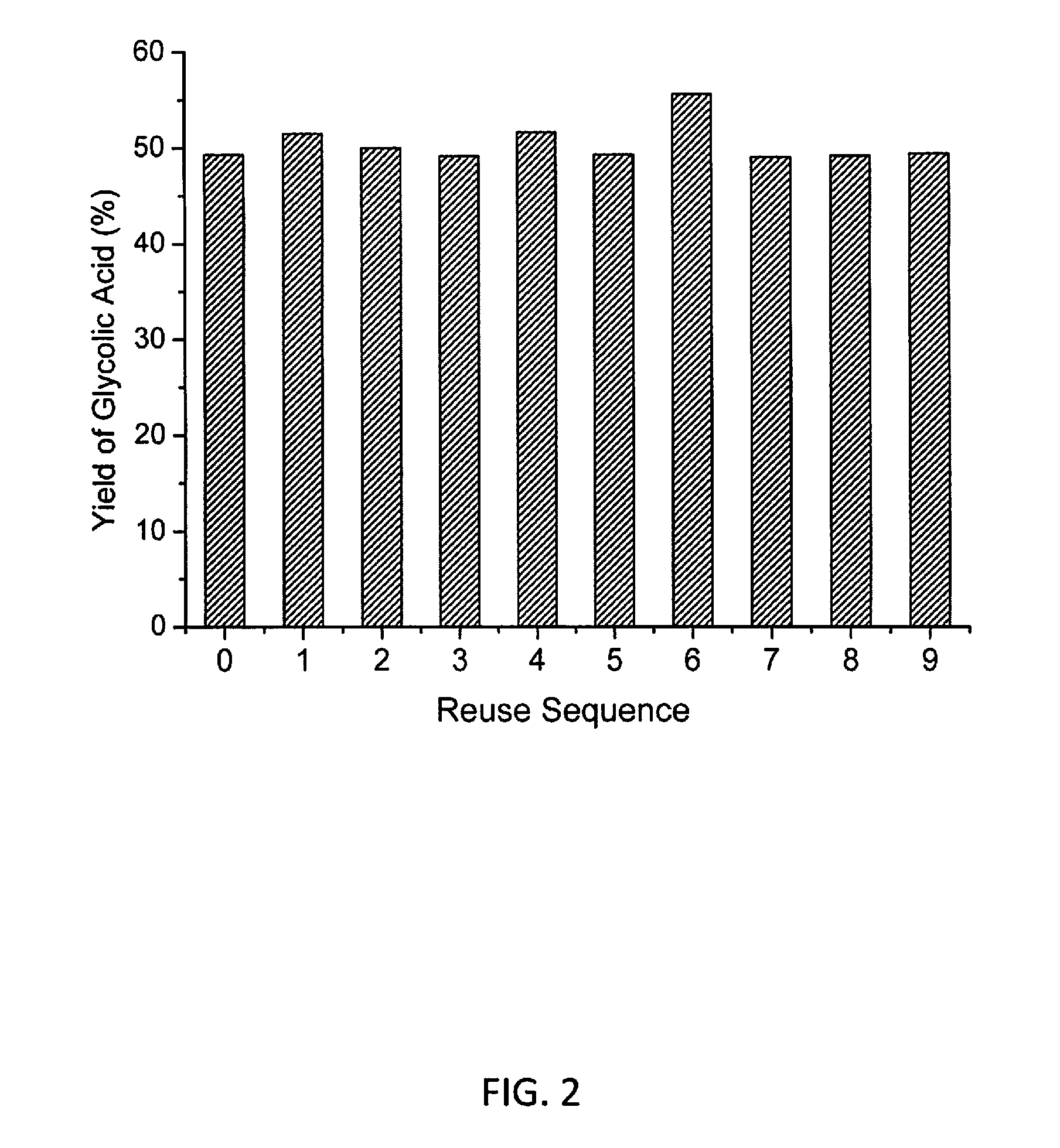Molybdenum-containing acidic catalysts to convert cellulosic biomass to glycolic acid
a molybdenum-containing acidic catalyst and cellulosic biomass technology, applied in the field of chemistry, biochemistry and life sciences, can solve the problems of insufficient literature reporting of selective oxidation, and insufficient production of glycolic acid from cellulosic biomass materials
- Summary
- Abstract
- Description
- Claims
- Application Information
AI Technical Summary
Benefits of technology
Problems solved by technology
Method used
Image
Examples
example 1
Molybdenum-Containing Acidic Catalysts for Conversion of Cellulosic Biomass to Glycolic Acid
[0043]In embodiments of the invention, the present invention demonstrates the direct conversion of primitive biomass, cellulose, via successive hydrolysis and selective oxidation in a noble metal-free system.
[0044]
[0045]Instead of using expensive ionic liquid to dissolve the reactant, the inventors utilized water as reaction media and heteropoly acids (HPA) as catalysts. Unlike conventional solid acid catalysts, HPAs are soluble in water and therefore more efficient for catalyzing the reactions of cellulose; on the other hand, they can be recovered in solid form after reaction by distilling out the products and solvent, which is a significant advantage over common volatile liquid acids. In specific aspects of the invention, besides the strong acidity that facilitates the hydrolysis and fragmentation of cellulose, certain HPAs have moderate oxygen activation ability to oxidize the produced car...
experimental embodiments
[0073]
[0074]The catalytic reactions of cellulose were carried out in a Teflon-lined stainless autoclave (75 mL) at 180° C. for 1 h under 0.6 M Pa O2 with 1000 rpm stirring. Typically, the reaction mixture comprises 20 mL of H2O, 200 mg of α-cellulose powder (containing 1.23 mmol glucose units), and 0.3 mmol of HPA catalyst. In the reactions of other sacchariferous substrates, a fixed amount (200 mg) of reactant was used. After reaction, the remaining cellulose in the reaction system was collected by centrifugation and its mass was measure for calculating the cellulose conversion. The supernatant liquid was analysed by HPLC (Agilent, 1260 infinity Quaternary System) equipped with RI and UV detectors, and a Waters Shodex SUGAR SH-1011 column (8×300 mm) with 0.05 M H2SO4 aqueous solution as a mobile phase at 40° C. Quantification of products was carried out by HPLC using an external standard method. Calibration was done by analysing a series of standards covering the concentration rang...
PUM
| Property | Measurement | Unit |
|---|---|---|
| temperature | aaaaa | aaaaa |
| pressure | aaaaa | aaaaa |
| structures | aaaaa | aaaaa |
Abstract
Description
Claims
Application Information
 Login to View More
Login to View More - R&D
- Intellectual Property
- Life Sciences
- Materials
- Tech Scout
- Unparalleled Data Quality
- Higher Quality Content
- 60% Fewer Hallucinations
Browse by: Latest US Patents, China's latest patents, Technical Efficacy Thesaurus, Application Domain, Technology Topic, Popular Technical Reports.
© 2025 PatSnap. All rights reserved.Legal|Privacy policy|Modern Slavery Act Transparency Statement|Sitemap|About US| Contact US: help@patsnap.com



